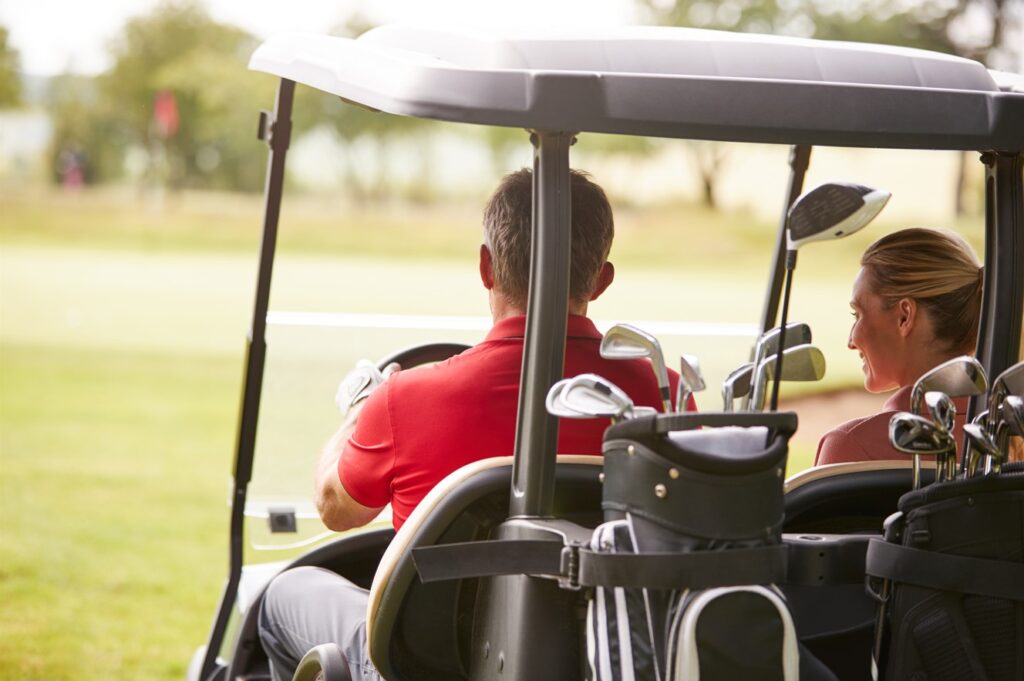As a golf course architect and golf course expert witness, I’ve worked to expose detrimental conditions so other architects, golf course managers and operators will discover new methods to improve the safety of play. Golf is a sport that affects everyone that plays on a golf course as well as those in the near proximity to a course.
After serving as an expert witness in more than 300 golf course cases, I’ve encountered most of the typical (and not so typical) accident conditions. To help educate on this matter, I’ve decided to pen a series of articles outlining some of the typical golf course cases and some of the challenges of those cases.
The Three Typical Golf Course Cases
In terms of case volume, the type of accident I see playout in the courtroom most frequently are as follows: (1) golf cart accident injuries or deaths; (2) errant golf ball shots and intentional errant shots; and (3) hazardous golf play conditions from the course design and/or the maintenance and upkeep of the golf course.
In this article, we will deal with the most frequent type of golf course case – the golf cart accident injuries or deaths.
Just an Interior Road System
Golf cart paths are simply a small interior site road system; therefore, they should be designed and built with similar road safety design criteria. Golf cart accidents are the number one type of accident occurring on golf courses, and also the number one liability concern of the big-name golf architects. That is why these architects hire civil engineers to design their cart paths systems on new course designs and major remodeling projects.
These engineers take into account various factors. For example, is the path system a one or two-way travel system – most designs and players see a cart path as a one-way travel and don’t think of possible design shortcomings of the cart path being used as a two-way system when vehicles are going in the opposite direction. This occurs when maintenance vehicles use the path system, you’ve seen the golf superintendent and his assistant traveling around the course cart paths in their pickup truck; scramble/shot gun tournaments when going to various starting tees and returning from the finishing greens; and resort courses that use housekeeping vehicles on some of the cart paths.
Also, anyone who has ever researched data on cart path accidents has discovered the most typical cart accident is a cart traveling on a long downhill path with a turn at the bottom, resulting in the cart overturning or going out of control. In just this one accident type there are a host of events taking place. Is the cart path too steep – I have had cases where the path was so steep that one could not stop the cart on the slope and other cases where the too steep path was abandoned. What is the surface condition of the path that deals with the coefficient of friction? Is the path in a wooded area or drainage way where moss build-up is common? Does the cart have two- or four-wheel braking? How much weight of patrons and gear was in the cart? Was alcohol a factor? Was the path surface consistent to prevent the cart from rocking side to side? Was all mechanical cart functions and brakes operational and functional? Were rain and or irrigation a coefficient of friction concern? Was the cart fishtailing before the accident? Was the super elevation into the turn designed and calculated appropriately?
When you go to the auto race track you see the end curved portion of the track pitched or sloped. This is super elevation, and its purpose is to overcome centrifugal force with gravity built into a calculated pitch of the road. So, before that track was built, the owner had to decide what kind of racing vehicles were to be raced there and design the slopes accordingly. Did the turn start, and end abruptly and not have a spiral curve to ease the driver into and out of the curve? Did the path have extra width on the turn? Was the curve designed speed properly calculated?
These are most, but not all the design concerns of just one turn condition on a golf course path system.
How many of these design factors do you think the do-it-yourself path installer takes into account? Every cart and vehicle travel condition is unique and has its own set of design criteria. You start to see why some golf course designers hire the path design out to those schooled in road and highway design.
I have also seen sub-standard path designs on many golf courses and have received feedback on why they occurred and what problems they caused. Some answers are amazing to me but keep repeating. Here are a few:
- “The architect sold me a complete set of plans, but the path system was just a routing plans, so I let the grading machine operator grade the path.”
- “The owner didn’t want to pay for an engineered path system design, so he let the asphalt contractor install it because he should know how to do it.”
- “As an owner, I know golf and installing a cart path system myself is no big deal.”
While I had intended to cover errant ball injuries and accidents in my next article, I will instead finish up this cart path accident article by reviewing some details of cart severe injuries and death cases.










